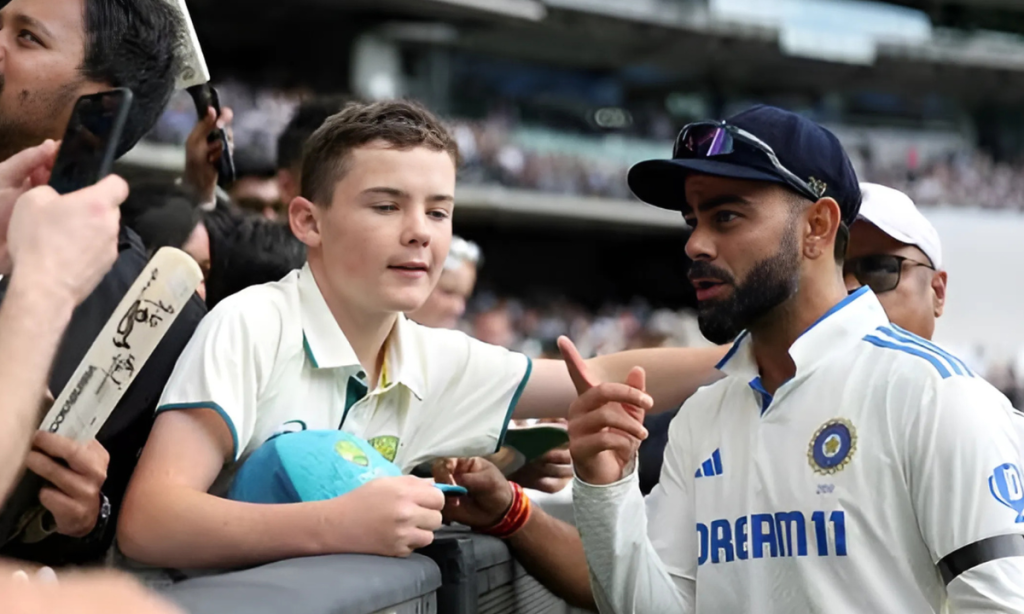Virat Kohli, one of cricket’s modern greats, is set to grace the Ranji Trophy pitch once again, marking his first appearance in the tournament since November 2012.
This return, much anticipated by fans and analysts alike, is scheduled for January 30 when Delhi takes on Railways.
However, in a twist that might disappoint many, this landmark event won’t be streamed live.
According to a tweet by journalist Kushan Sarkar, the broadcast schedule, planned well before the match, does not cover this fixture.
While Delhi’s earlier game against Tamil Nadu was televised, the absence of Kohli’s return match from the streaming list has left fans with one option – to witness this cricketing moment live at the stadium.
The Disappointment of Digital Deprivation
The decision not to stream Kohli’s Ranji Trophy comeback has sparked a mix of disappointment and intrigue among fans.
In an era where cricket matches, especially those featuring high-profile players like Kohli, are expected to be accessible through digital platforms, this omission feels like a step back.
Sarkar’s tweet highlighted that while the roster was fixed, any last-minute alterations to include this match would depend on unforeseen developments.
This development underscores the often-rigid nature of sports broadcasting, where even significant events can slip through the digital net due to pre-planned schedules.
A Call to the Stadium
Despite the setback of not being available for streaming, the excitement around Kohli’s return has not waned.
In fact, the Delhi District Cricket Association (DDCA) has capitalized on the hype by making special arrangements, including free entry for 10,000 fans to witness the match.
This initiative not only aims to boost attendance but also to create an unforgettable atmosphere for one of cricket’s biggest stars.
For many, this could be a rare opportunity to see Kohli play in domestic cricket, a sight not witnessed for 13 years.
The call to attend the match in person has thus transformed from a choice to a necessity for those eager to experience this historic moment.
Virat Kohli’s Journey Back to Domestic Cricket
Kohli’s return to the Ranji Trophy is significant for several reasons. Firstly, it’s a testament to his commitment to domestic cricket, a move encouraged by the BCCI to keep national players grounded in India’s cricketing roots.
Secondly, it comes at a time when Kohli, by his standards, has had an underwhelming year in 2024, managing only 319 runs in 15 matches across formats at a dismal average of 18.76.
This dip in form has been a topic of much discussion, with many hoping that a return to domestic cricket might reignite his scoring prowess.
The last time Kohli played in the Ranji Trophy, he was a young gun on the rise, with his performances there setting the stage for his international career.
His return now, seasoned and still hungry, adds layers of narrative to his cricketing journey – from a promising player to a global icon and back to the domestic arena.
The Impact on Fans and Cricket Culture
The absence of live streaming for Kohli’s match highlights a broader conversation about the accessibility of cricket.
While the digital era has made sports more watchable than ever, there remains a charm and a raw connection in watching a match live.
This event might just bring fans back to the essence of cricket watching – the live experience, complete with the chant of the crowd, the smell of the turf, and the direct, unfiltered connection with the game.
For many, it will be a throwback to the times when watching cricket meant planning a day around the match, not just tuning into a live stream.
However, this also poses a challenge. Not everyone can make it to the Arun Jaitley Stadium in Delhi.
For those fans, the lack of streaming might mean missing out on a moment they might have cherished for years. It’s a reminder of how pivotal media rights and broadcasting decisions are in shaping the fan experience.
In Summary
Virat Kohli’s return to the Ranji Trophy after such a long hiatus is a narrative rich with potential – potential for redemption, for resurgence, and for reconnecting with the grassroots of Indian cricket.
The decision not to stream this match live is a poignant reminder of the pre-digital era of sports watching, yet it also underscores the need for flexibility in broadcasting to cater to the modern fan.
As fans gear up to witness Kohli’s play, perhaps this event will serve as a catalyst for revisiting how we engage with cricket at both the domestic and international levels.
For now, on January 30, Delhi’s cricket enthusiasts have a date with history, one that will be lived and breathed in the stands rather than through screens.

